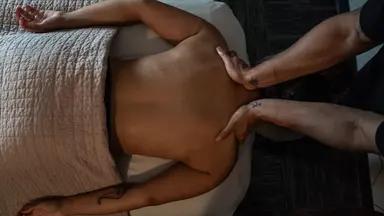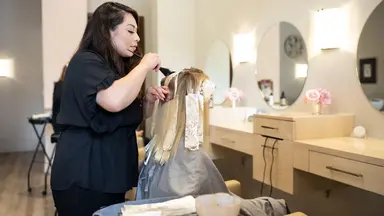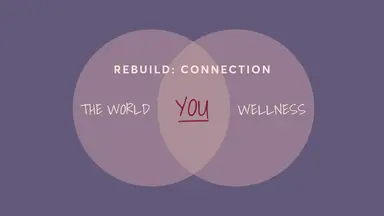Mindbody Video
Rethinking Your Spa Operating Hours
Summary
Industry consultant Lisa Starr talks about how to think about reopening. When you first reopen, it may be wise to have modified hours. She also recommends staggering service start times to minimize the number of clients in your space at one time. Make it easy for your clients to reduce contact, too; have clients book online, wait outside until your team is ready, and check out with contactless payment. Lisa also advises shorter services and shorter shifts for staff. Spas needs to ease back into things as they reopen.
Recommended resources:
Minimize Contact While Maximizing Revenue with Bowtie
Reboot Kit: How to Reopen Your Salon, Spa, or Wellness Business Post COVID-19
Hi, this is Lisa Starr with Wynne Business Spa Education and Consulting and I wanted to speak with you for a moment about how we're going to reopen after COVID in terms of operating schedules.
It was unfortunate timing when the virus struck because we were really busy, you know, in our spas and salons and wellness businesses. And you may be thinking, oh, I can't wait to get back to that. But it's going to take a little bit of time before we can do that. Mostly because of spacing requirements. So, just to be clear, each state is releasing guidelines, within the state, on what can open when and those are phased, typically. Hair and nail salons have often been able to open prior to massage or facials being available, so you have to pay careful attention in your state to what you're allowed to do. Georgia was the first state to approve spa and so we've been carefully watching there what has happened and there are a few other states following suit in the moment.
So, when you reopen, my guess is you won't want to go back to a seven day a week operation, at least not right away. Especially for the first few weeks is going to take some time to kind of get used to the new procedures, get your staff used to it, the guests. So, it may be sensible to open say Thursday through Sunday and then spend the next few days reassessing how it went and readjusting as you need to. So, obviously, decide on the hours but the hours are going to be designed around maximizing the productivity that you are able to have.
With the staggering requirements of spacing, in salon environments, we're really only able to open every other station and in spa it will be in the treatment rooms obviously are distinct from each other but we don't want guests passing at the desk or at the check in. So, what is typically happening is we are staggering start times. Now one guest may start at 9:00, the next at 9:30, the next at 10:00. And you're going to design your shifts around the capabilities of the staff that you have, how long they want to work, how long they're comfortable. We're finding that many staff members in spas, they want to come back but they still may have fears, so you may have employed 35 people in your spa but you may be bringing back, excuse me, only 15 or 18 to start and that's normal. You know, some people will hang back till they feel safer and that's okay, you don't need them all right away anyway.
So, your procedures look like, you know, the guest books online is ideal, even if they've called as well. There's no need to visit before. They should wait outside and you text or phone them. They let you know when they're there. You open the door and escort them in. They go right back to their treatment area, they change in the treatment area—we're not using locker rooms yet or refreshment bars or lounges, not at this point. So, the guest changes in the treatment room, they have their treatment, they go to check out using Mindbody or Booker or if they're using online booking, they've put in their credit card info, it'll be seamless contactless, they can just go, which is easy for everyone. It does hamper the potential for retail sales, but we'll get back to that shortly.
So, things to consider are the timing of the shift in particular will be based, as I said, on the staff member's capability. Wearing a mask is draining. It's dehydrating, it's not something you really want to do for eight or nine hours. We're finding that most staff members are comfortable with a five-hour shift and that's the federal guideline before a break anyway, so maybe you think about five-hour increments for your people. Shorter services, nothing too long. I had another video about treatment menus, so I won't go into that now, but this is not a time for 90-minute services. Keep them shorter. If you've been at 50 minutes, that's great. 60 is also fine.
We're seeing that it takes about 15 minutes to clean the room. It's really not that bad because the guest comes in, they change, they get on the table, which is covered with sheets. All the sheets go in the laundry, everything goes in the laundry, they get dressed and leave. So, you have to wipe down the chair and the chair and the door handle etc. But, you know, the whole room does not have to be fumigated between guests. They are wearing masks in supine position for massage but not in prone. Obviously, it's difficult to give a facial with a mask on so in that case, we are looking at shielding or a shield certainly on the on the esthetician is helpful, maybe in addition to a mask, and make sure that your employees are hydrated and they have supplies that they need to maintain this. We think that it will be a few months, right, until people are used to working this way, and maybe we can decrease that social distancing requirement.
But we are happily seeing that spas and salons that are opening are having a good demand. I mean, I heard yesterday that a famous resort in Virginia is already fully booked for Memorial Day weekend, fully booked to their capacity. Right. So, we're looking at 25 to 30% capacity compared to what we're used to, in order to keep the distancing requirements that we need to.
I want to speak just one moment about thermometers. There's been a lot of talk about taking temperatures of staff, of guests. We know that the temperature does not indicate that you have a virus and you might have a temperature and not have a virus, so it's not any clear indication. However, it's often being done just to make people feel better. And, in your email blasts and social posts about what you're doing for your guests, you may include that if you plan to do that. Certainly, with a touch less thermometer, but they are quite accurate. They're about $75 and if that makes everybody feel better, you know, why not, but just know that you're going to need to ease back into it and not come back full force. We'll be able to do that as time goes on. A little bit at a time.
Thank you for listening. I'm going to share some contact info with you, should you need to reach out to me anytime, please do. I'm happy to help. And thanks again. See you soon.
New resources, straight to your inbox
Get updates on the latest industry trends, tips, and news.
We're committed to your privacy. Mindbody uses the information you provide to us to contact you about our relevant content, products, and services. You may unsubscribe at any time. View Privacy Policy



